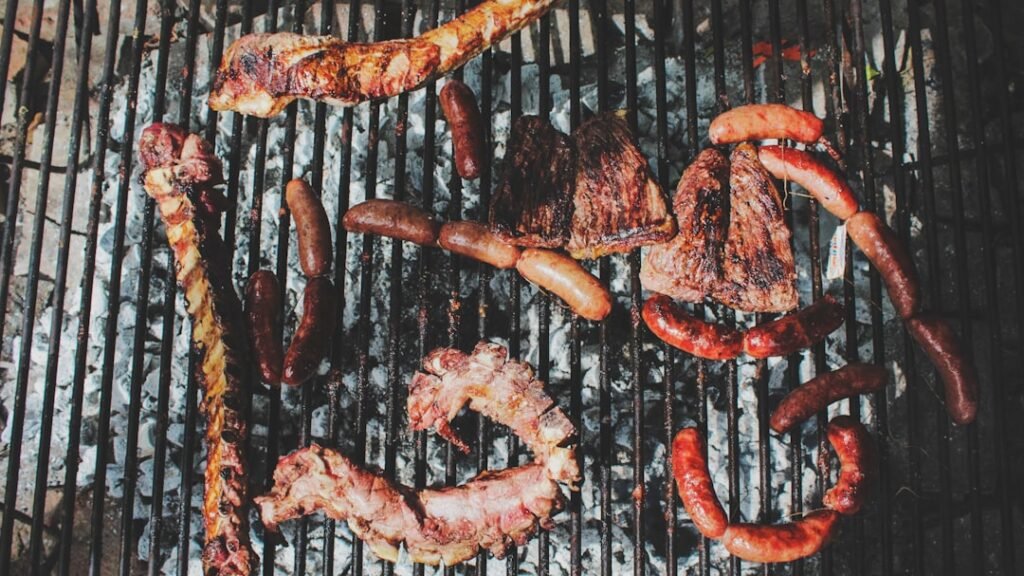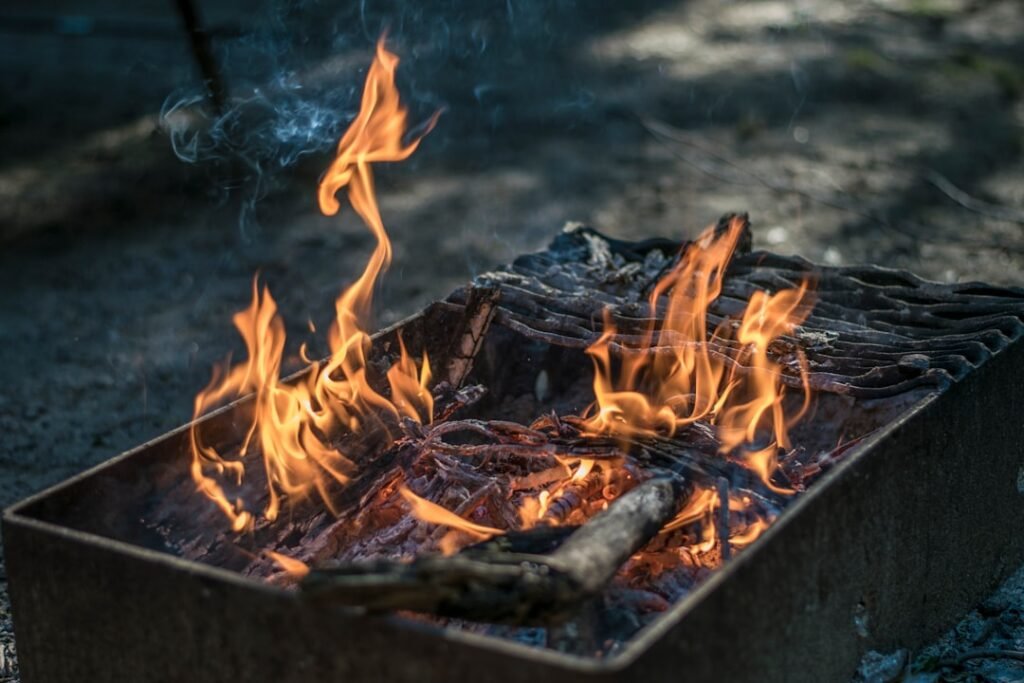The Art of Smoked Meat: A Culinary Delight

The practice of smoking meat is steeped in history, tracing back thousands of years to ancient civilizations. I often find myself fascinated by how this method of preservation and flavor enhancement has evolved over time. Early humans discovered that exposing meat to smoke not only extended its shelf life but also imparted a unique flavor that was both savory and aromatic.
Archaeological evidence suggests that the practice may have originated as far back as 4000 B.in regions like Mesopotamia, where people relied on smoking to preserve their food in the absence of refrigeration. As I delve deeper into the history of smoking meat, I learn that different cultures developed their own techniques and styles. In North America, Indigenous peoples utilized smoking as a means to preserve fish and game, often using local woods to create distinct flavors.
The arrival of European settlers introduced new methods and spices, leading to a rich tapestry of smoked meats that we enjoy today. From the hickory-smoked barbecue of the American South to the delicate cold-smoked salmon of Scandinavian countries, each region has contributed its own unique twist to this ancient culinary art.
Choosing the Right Wood for Smoking
When it comes to smoking meat, the choice of wood is paramount. I’ve come to appreciate that different types of wood impart varying flavors, and selecting the right one can elevate my smoked dishes to new heights. Hardwoods like hickory, mesquite, and oak are popular choices due to their robust flavors and long-burning characteristics.
Hickory, for instance, offers a strong, bacon-like flavor that pairs beautifully with pork and ribs, while mesquite provides a more intense, earthy taste that works well with beef. In my exploration of wood types, I’ve also discovered the subtler flavors offered by fruitwoods such as apple, cherry, and peach. These woods lend a mild sweetness that complements poultry and fish exceptionally well.
I often experiment with blending different woods to create a unique flavor profile for my smoked meats. For example, combining hickory with applewood can yield a delightful balance of smokiness and sweetness that tantalizes the palate.
The Best Cuts of Meat for Smoking

Selecting the right cut of meat is crucial for achieving optimal results when smoking. I’ve learned that tougher cuts with more connective tissue tend to benefit from the low-and-slow cooking method that smoking provides. Cuts like brisket, pork shoulder, and ribs are ideal candidates because they become tender and flavorful as they cook over an extended period.
The slow rendering of fat in these cuts allows for a rich, juicy end product that is hard to resist. On the other hand, I’ve also found that certain leaner cuts can be successfully smoked with careful attention. Chicken breasts and fish fillets can be delicious when smoked, but they require a more delicate approach to avoid drying out.
Brining or marinating these cuts beforehand can help retain moisture during the smoking process. Ultimately, my choice of meat often depends on the occasion and the flavor profile I wish to achieve, but I always keep in mind the importance of selecting cuts that will benefit from the smoking technique.
Techniques for Achieving the Perfect Smoked Flavor
| Technique | Description |
|---|---|
| Choosing the Right Wood | Selecting the appropriate wood chips or chunks for the type of meat being smoked can greatly impact the flavor. |
| Low and Slow Cooking | Smoking meat at a low temperature for a longer period of time allows the flavors to penetrate the meat and creates a tender texture. |
| Using a Dry Rub | Coating the meat with a dry rub mixture before smoking can enhance the flavor and create a delicious crust on the exterior. |
| Controlling the Smoke | Regulating the amount of smoke and ensuring it remains clean can prevent the meat from becoming overly smoky or bitter. |
| Resting the Meat | Allowing the smoked meat to rest before serving helps the flavors to settle and the juices to redistribute, resulting in a more flavorful and moist end product. |
Achieving the perfect smoked flavor is an art form that requires practice and patience. One technique I’ve found particularly effective is the use of a dry rub or marinade before smoking. A well-balanced rub can enhance the natural flavors of the meat while adding layers of complexity.
I often experiment with various spices, herbs, and even sugars to create a rub that complements the specific cut I’m working with. The key is to allow the rub to penetrate the meat for several hours or even overnight before smoking. Another technique I’ve embraced is controlling the smoke itself.
I’ve learned that too much smoke can lead to an acrid taste, while too little can result in a lackluster flavor. To strike the right balance, I focus on maintaining a steady flow of thin blue smoke rather than billowing white smoke. This involves managing my smoker’s airflow and temperature carefully.
Additionally, I’ve found that adding wood chips or chunks at intervals throughout the cooking process helps maintain a consistent smoky flavor without overwhelming the meat.
The Art of Brining and Seasoning
Brining is an essential step in my smoking process, especially for leaner cuts of meat. By soaking meat in a saltwater solution, I can enhance its moisture retention and flavor profile. I typically add various herbs, spices, and even sugar to my brine to create a more complex taste.
The science behind brining fascinates me; as the meat absorbs the brine, it becomes juicier and more flavorful during cooking. Seasoning goes hand-in-hand with brining in my culinary journey. After brining, I often apply a dry rub or seasoning blend to further enhance the flavor before smoking.
This combination of brining and seasoning allows me to create layers of taste that make each bite memorable. I’ve learned that balancing saltiness with sweetness and acidity is crucial for achieving a well-rounded flavor profile that keeps my guests coming back for more.
Tips for Maintaining the Ideal Smoking Temperature

Maintaining the ideal smoking temperature is one of the most critical aspects of successful smoking. I’ve discovered that consistency is key; fluctuations in temperature can lead to uneven cooking and undesirable results. Most meats benefit from a low-and-slow approach, typically around 225°F to 250°F (107°C to 121°C).
To achieve this, I rely on a good quality thermometer to monitor both the smoker’s internal temperature and the meat’s internal temperature. I’ve also learned various techniques for managing heat within my smoker. Using a combination of charcoal and wood chunks allows me to maintain a steady temperature while providing ample smoke flavor.
Additionally, I pay close attention to airflow; adjusting vents can help regulate heat levels effectively. By being vigilant about temperature control throughout the smoking process, I ensure that my meats cook evenly and develop that coveted smoky flavor.
Pairing Smoked Meats with the Perfect Sides and Sauces
The experience of enjoying smoked meats is often enhanced by thoughtful pairings with sides and sauces. I’ve come to appreciate how certain accompaniments can elevate a meal from good to extraordinary. Classic sides like coleslaw, baked beans, and cornbread complement smoked meats beautifully by providing contrasting textures and flavors.
The crunchiness of coleslaw balances out the richness of smoked pork or brisket, while baked beans add a touch of sweetness. When it comes to sauces, I find that regional variations offer exciting options for enhancing smoked meats. A tangy vinegar-based sauce pairs wonderfully with pulled pork in North Carolina-style barbecue, while a thicker tomato-based sauce complements ribs in Kansas City-style barbecue.
I often experiment with homemade sauces, incorporating ingredients like mustard, honey, or even fruit preserves to create unique flavor profiles that harmonize with my smoked creations.
Exploring Different Types of Smokers and Smoking Methods
The world of smokers is vast and varied, each type offering its own unique advantages and challenges. As I explore different options, I find myself drawn to both traditional and modern methods of smoking. Offset smokers are popular among purists for their ability to produce rich flavors through indirect heat and smoke from wood logs.
However, I also appreciate electric smokers for their convenience and ease of use, especially when hosting gatherings where consistency is key. In addition to traditional smokers, I’ve experimented with alternative methods such as stovetop smoking or using a grill with indirect heat. These techniques allow me to enjoy smoked flavors even when I don’t have access to a dedicated smoker.
Each method has its own learning curve, but they all contribute to my growing repertoire of skills in the art of smoking meat. Ultimately, my journey through different types of smokers has deepened my appreciation for this time-honored culinary tradition and its endless possibilities for creativity in flavor and technique.






